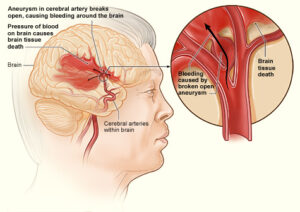Exudate
- Consists of fluid and leukocytes that move from circulation to site of injury
- Nature and quantity depend on type and severity of injury and tissues involved
- Types of inflammatory exudate
- Serous
- Serosangulneous
- Fibrinous
- Hemorrhagic
- Purulent (pus)
- Catarrhal
Clinical manifestations
- Local response to inflammation
|
Manifestations |
Cause |
|
Redness |
Hyperemia from vasodilation |
|
Heat |
Increased metabolism at inflammatory site |
|
Pain |
Change in pH. Nerve stimulation by chemicals (e.g., histamine, prostaglandins). Pressure from fluid exudate |
|
Swelling |
Fluid shift to interstitial spaces. Fluid exudate accumulation |
|
Loss of function |
Swelling and pain |
- Systemic response to inflammation
- Increased WBC count with a shift to the left
- Malaise
- Nausea and anorexia
- Increased pulse and respiratory rate
- Fever
- Onset is triggered by release of cytokines
- Cytokines cause fever by initiating metabolic changes in temperature-regulating center in hypothalamus
- Epinephrine released from adrenal medulla increases metabolic rate
- Patient then experiences chills and shivering
- Body is hot, yet person seeks warmth until circulating temperature reaches core body temperature




